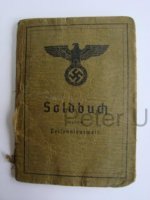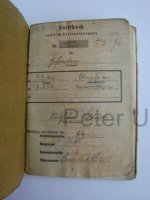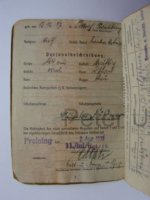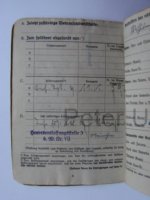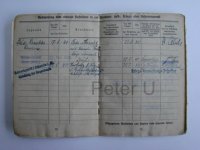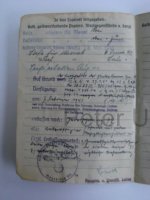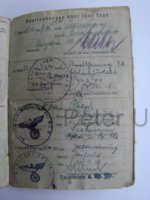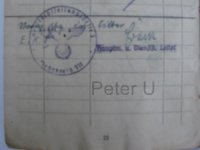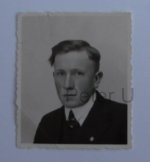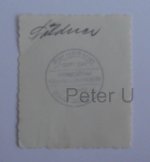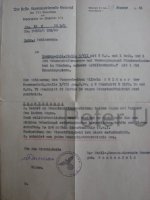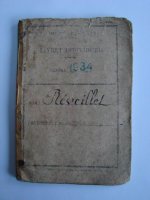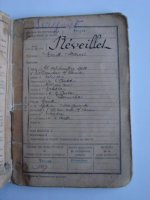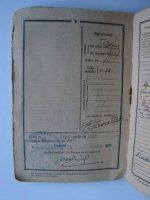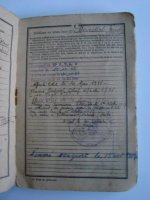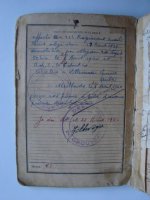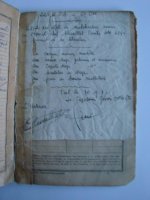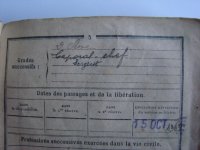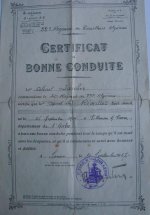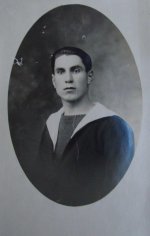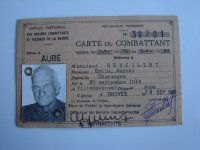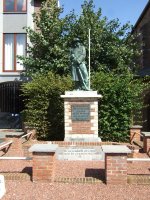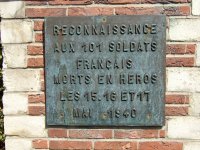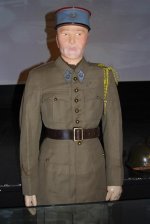Hello,
In the final weeks of this year I was able to obtain three unspectacular but rather interesting Soldbucher, this is #1:
Before the war Wilhelm Söldner (°1917) was a farmhand from Jederschwing, according to his Soldbuch he was on August 2 1939 a corporal in the 11th company of IR19 (7ID).
One of the earliest Soldbucher in my collection; his unit was at this time in full preparation for the upcoming invasion of Poland.
Four weeks after this ID booklet was issued WW2 had started officially, the 7ID units participated in the Polish campaign as a part of the 14th Army, immediately after the defeat of Poland the 7ID is transferred to the west to counter an allied offensive.
This allied offensive never takes place and the German army takes the initiative again in the spring of 1940, the 7ID now is a part of the 6th Army, their task is to press through the southern tip of the Netherlands, through northern Belgium and to attack the allies where they expect the main body of the German army will attack: in the open plain between Wavre and Namur as a part of the big feint attack. They not only have to make the allies believe they are the main assault wave, they also have to hold up the best allied units, preventing them from making a flanking counter attack on the real main body of the German army that is manoeuvring through the Ardennes.
The German army generals know it is a difficult task and they assign combat experienced divisions to the 6th Army.
In the first days of the offensive IR19 is kept in reserve but when they make contact with the main body of the French 1st Army on the Dyle river line on May 14 1940, IR19 is called up to the front, the next day they will relieve the recon unit and make a full infantry assault on the French soldiers that dug themselves in and around the village of Limal.
Their counterparts in Limal are French North African soldiers from the 2DINA.
According to their unit history, they get a very warm reception from the French artillery.
- "I hate the French artillery" was said by Marshal Ludendorff in 1918, in this period the French army had + 10.500 field artillery pieces and most of them were still available in 1940; and although French field artillery was for the most part still horse drawn it still was a force the German army feared.
Uffz Wilhelm Söldner is one of the many artillery victims of that day, he gets seriously wounded on both of his eyes.
On May 17 1940 he is admitted to the civilian city hospital in Aachen, their the doctor(s) can safe his right eye but his left one is lost; four days later he is transferred to a military hospital.
At the end of July '40 he leaves the hospital and joins an Ersatz unit but his military carrier is over, in January '41 he gets a medical discharge.
He hands in his Soldbuch, gets his Wehrpaß back and leaves the army with a wounded badge in silver and an EKII on his chest, most likely very little comfort for the loss of his eye and the facial wounds he sustained.
Regards,
Peter
In the final weeks of this year I was able to obtain three unspectacular but rather interesting Soldbucher, this is #1:
Before the war Wilhelm Söldner (°1917) was a farmhand from Jederschwing, according to his Soldbuch he was on August 2 1939 a corporal in the 11th company of IR19 (7ID).
One of the earliest Soldbucher in my collection; his unit was at this time in full preparation for the upcoming invasion of Poland.
Four weeks after this ID booklet was issued WW2 had started officially, the 7ID units participated in the Polish campaign as a part of the 14th Army, immediately after the defeat of Poland the 7ID is transferred to the west to counter an allied offensive.
This allied offensive never takes place and the German army takes the initiative again in the spring of 1940, the 7ID now is a part of the 6th Army, their task is to press through the southern tip of the Netherlands, through northern Belgium and to attack the allies where they expect the main body of the German army will attack: in the open plain between Wavre and Namur as a part of the big feint attack. They not only have to make the allies believe they are the main assault wave, they also have to hold up the best allied units, preventing them from making a flanking counter attack on the real main body of the German army that is manoeuvring through the Ardennes.
The German army generals know it is a difficult task and they assign combat experienced divisions to the 6th Army.
In the first days of the offensive IR19 is kept in reserve but when they make contact with the main body of the French 1st Army on the Dyle river line on May 14 1940, IR19 is called up to the front, the next day they will relieve the recon unit and make a full infantry assault on the French soldiers that dug themselves in and around the village of Limal.
Their counterparts in Limal are French North African soldiers from the 2DINA.
According to their unit history, they get a very warm reception from the French artillery.
- "I hate the French artillery" was said by Marshal Ludendorff in 1918, in this period the French army had + 10.500 field artillery pieces and most of them were still available in 1940; and although French field artillery was for the most part still horse drawn it still was a force the German army feared.
Uffz Wilhelm Söldner is one of the many artillery victims of that day, he gets seriously wounded on both of his eyes.
On May 17 1940 he is admitted to the civilian city hospital in Aachen, their the doctor(s) can safe his right eye but his left one is lost; four days later he is transferred to a military hospital.
At the end of July '40 he leaves the hospital and joins an Ersatz unit but his military carrier is over, in January '41 he gets a medical discharge.
He hands in his Soldbuch, gets his Wehrpaß back and leaves the army with a wounded badge in silver and an EKII on his chest, most likely very little comfort for the loss of his eye and the facial wounds he sustained.
Regards,
Peter



